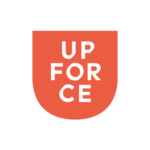Useful tips for creating a professional resume
Useful tips for creating a professional resume
A resume is more than just a list of work experience and skills; it is your personal business card, an opportunity to tell your unique story and convince employers of your added value. In this guide, we explore the essential steps to create a resume that stands out, highlights your strengths and opens the door to new professional opportunities.
Make a resume in 7 simple steps
A professional resume includes several essential sections that showcase your background, experience, skills, and personality. Here are the most important sections typically included in a resume. Or download one of our example resumes.
1 Personal information
Start your resume with your personal details: full name, contact details (address, telephone number, email address), and if relevant, also links to professional online profiles such as LinkedIn or Pinterest. You can also choose to add an image of yourself. This could be the same image as your LinkedIn profile.
2 Profile or summary
It is always a good idea to write a concise paragraph about who you are, your expertise, strengths and career goals. This summary should not be too long, but should immediately give the employer an idea of what they can expect from you. See it as a summary of your resume.
3 Work experience
Here you make an overview of your previous work experience in reverse chronological order (from most recent to older jobs). State the job title, name of the company, the period in which you worked there and describe your responsibilities and achievements. If there are any special projects you worked on during your employment, it is certainly smart to mention these as well.
4 Education
A list of your obtained diplomas and certificates, including the names of the educational institutions and graduation dates. It is also smart to mention the field of study in combination with the associated subjects. If you got very high grades you could also mention this.
5 Skills
A section in which you list skills relevant to the position you are applying for, such as technical skills, software proficiency and other specific competencies. For every position you apply for, it is wise to see which skills suit that specific job. This way your resume always matches the vacancy in question perfectly.
6 References
It is not necessary to include references in your resume, but you can indicate that these are available upon request. Make sure you always ask permission when using a person as a reference. This lets this person know that he/she can be contacted by your potential new employer.
7 Additional sections (optional)
Below are a number of additional things you can mention on your resume. This is not necessary, but it can make your resume extra powerful.
- Any additional certifications or courses you have completed.
- Relevant volunteer work or community involvement.
- Mentioning your language knowledge and its level.
- If you have published articles or participated in interesting projects, you can mention this.
It is important to remember that the content of your resume should be tailored to the specific position you are applying for. Focus on relevant experience and skills that match the requirements of the job. In addition, it is important to create a clear and professional-looking document, with a clear structure and consistent use of font and formatting.
Need more tips for your resume?
We are happy to help you get started with an attractive and professional resume. Contact us if you have any further questions.
Need more tips for your resume?
We are happy to help you get started with an attractive and professional resume. Contact us if you have any further questions.
